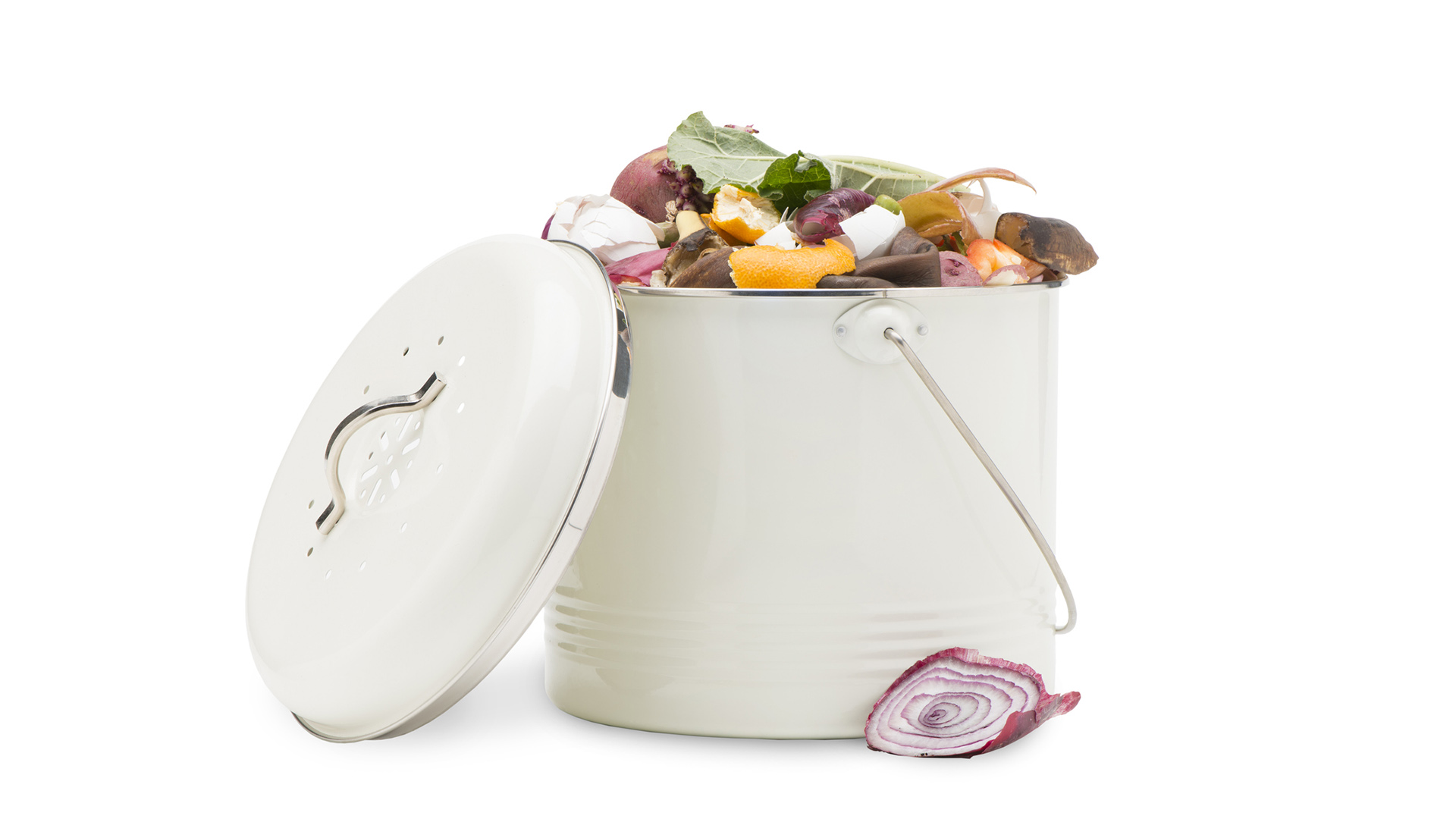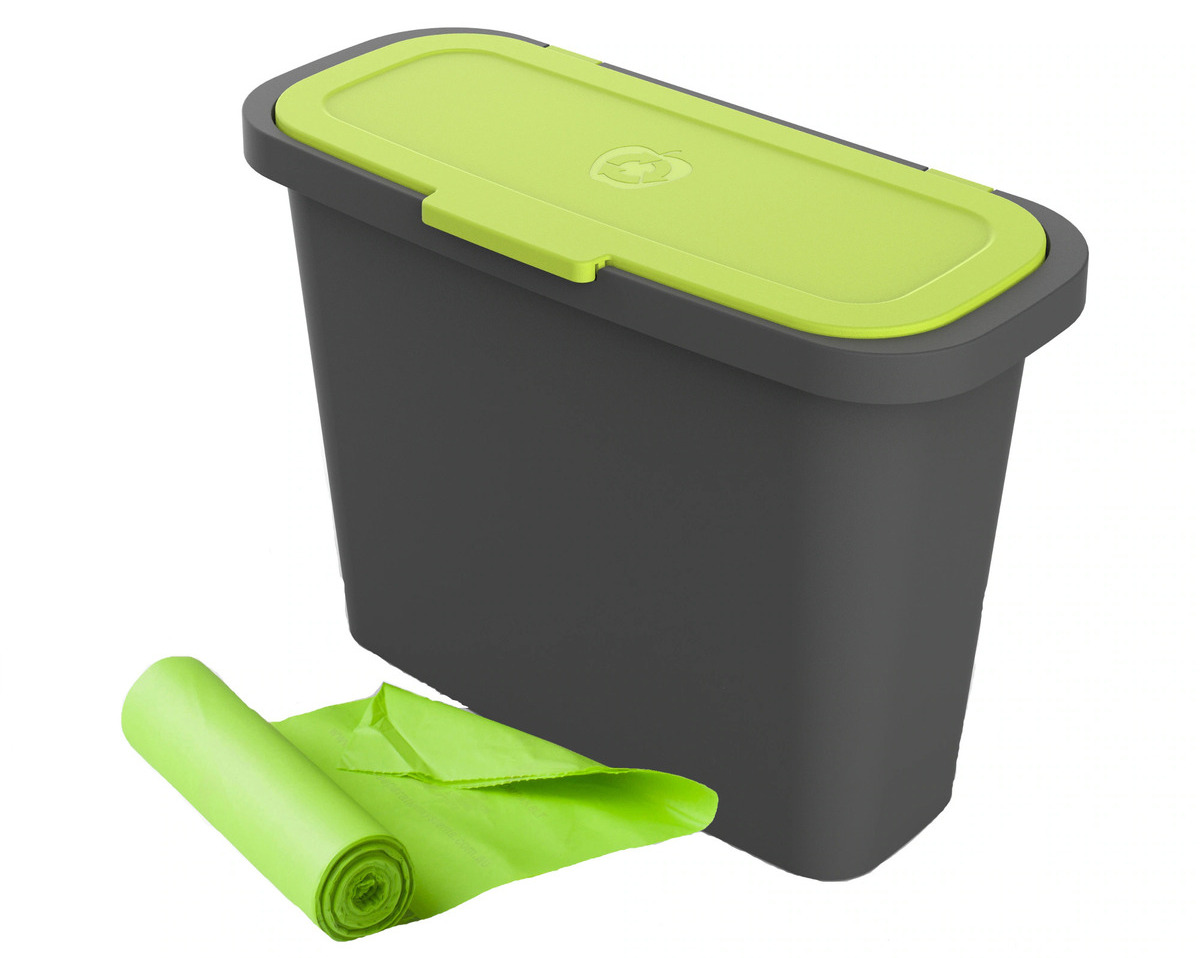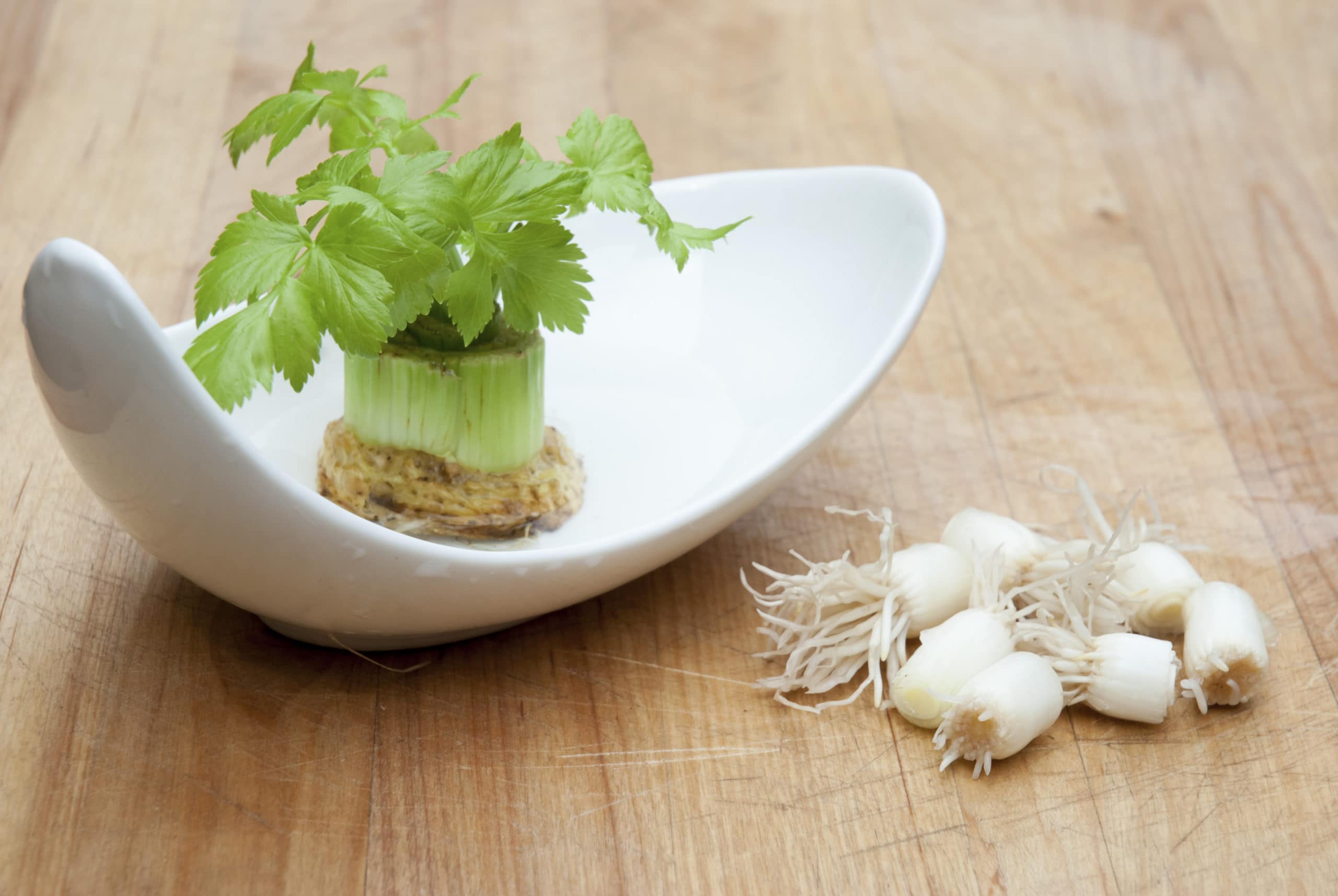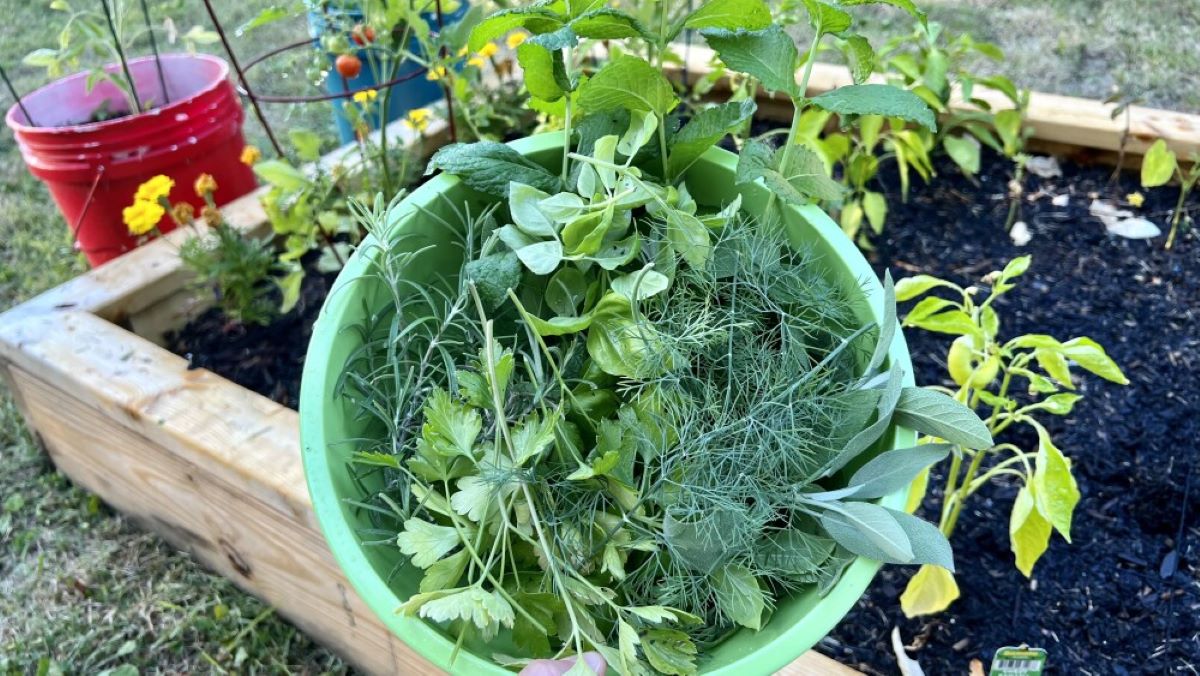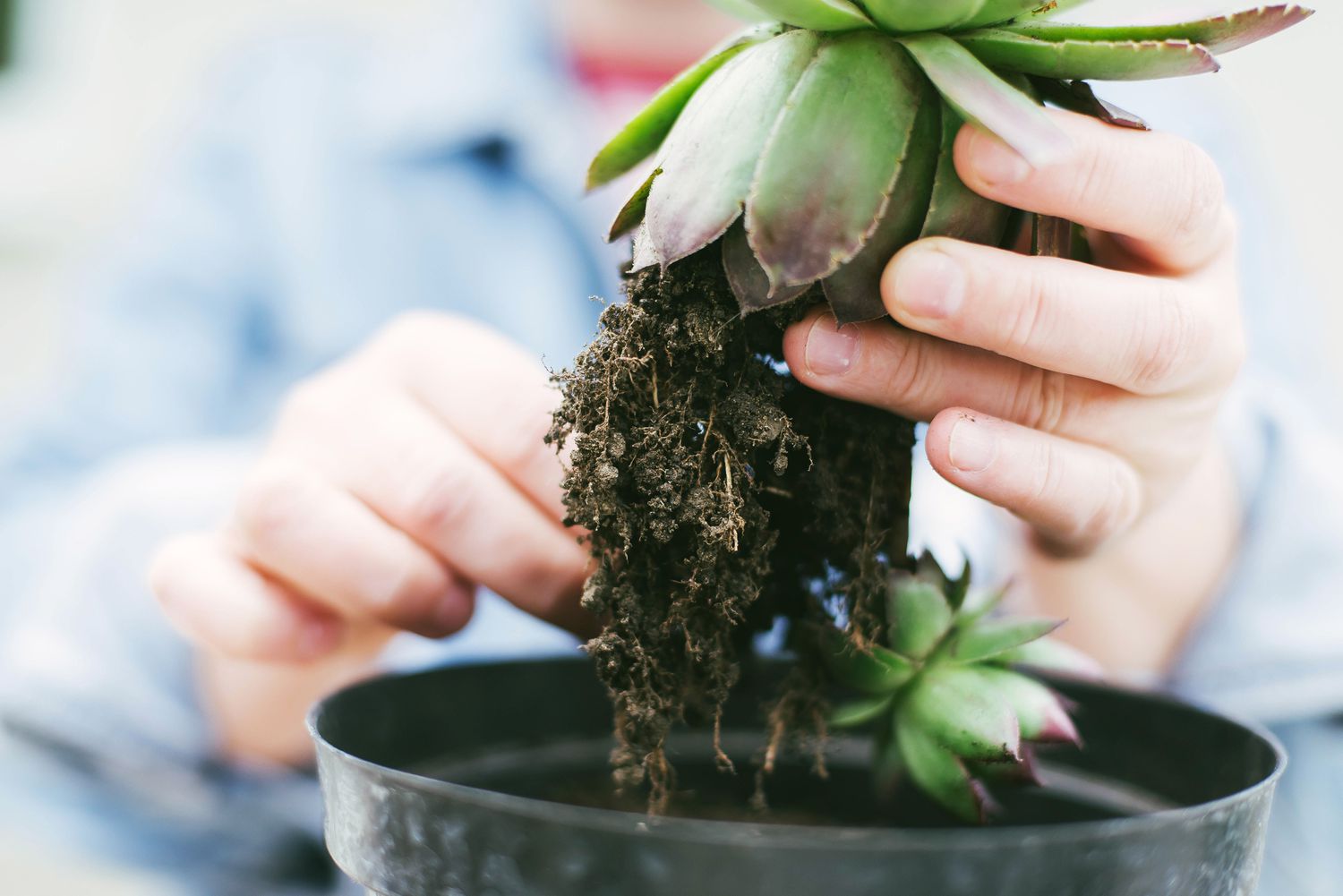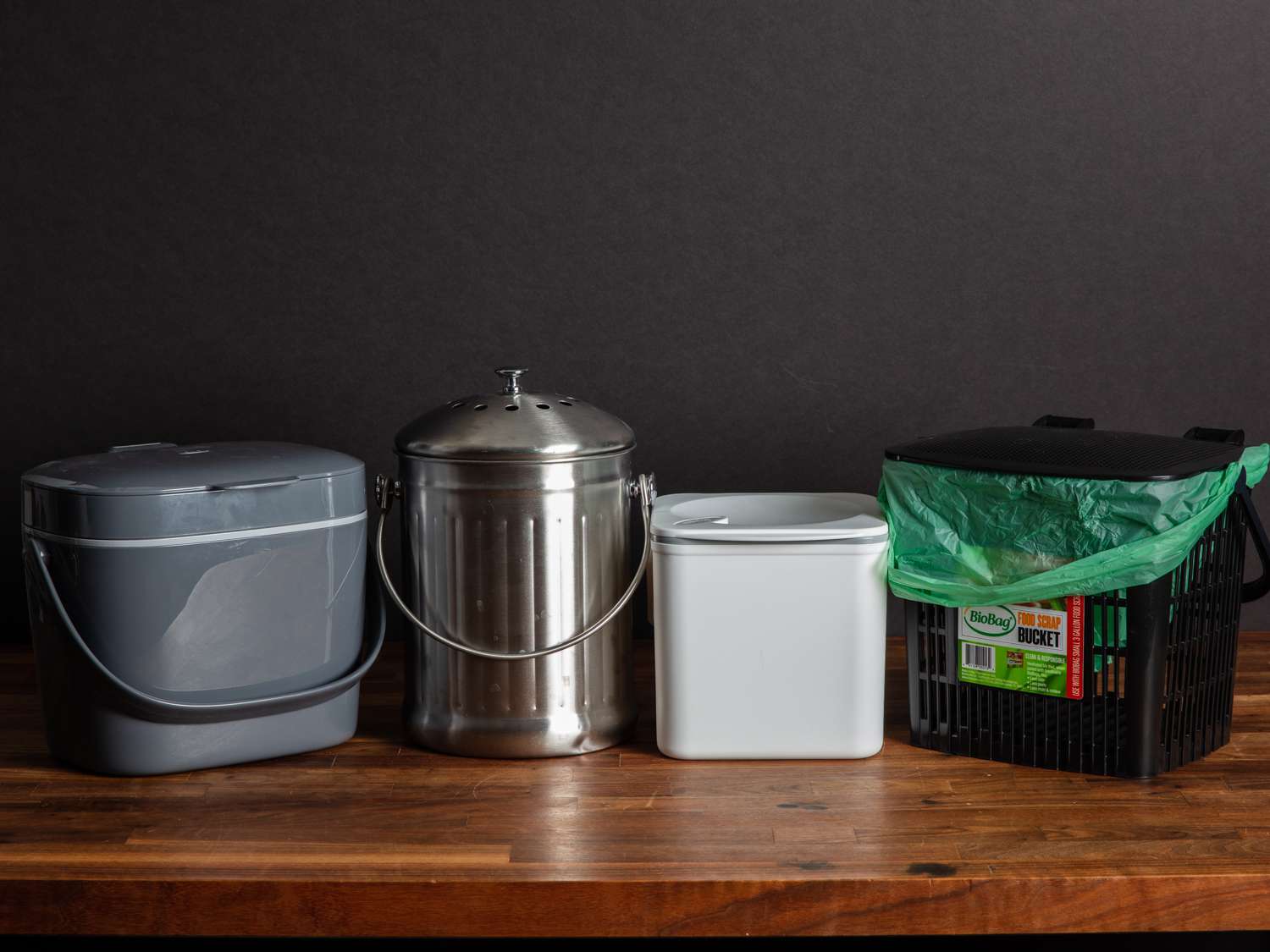Home>Gardening Tips and Tricks>Eco-Friendly Gardening>How Do I Compost Kitchen Scraps
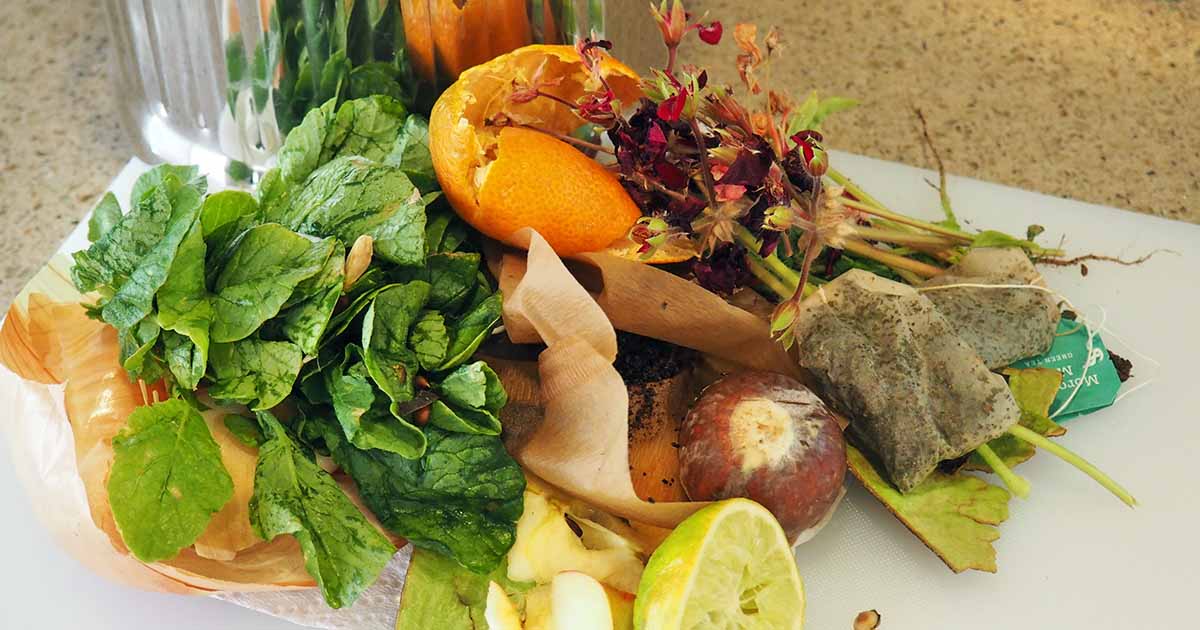

Eco-Friendly Gardening
How Do I Compost Kitchen Scraps
Modified: January 22, 2024
Discover how to compost kitchen scraps and create an eco-friendly garden with our easy-to-follow tips and tricks. Start reducing waste and nourishing your plants today!
(Many of the links in this article redirect to a specific reviewed product. Your purchase of these products through affiliate links helps to generate commission for Chicagolandgardening.com, at no extra cost. Learn more)
Table of Contents
- Introduction
- Benefits of Composting Kitchen Scraps
- Types of Kitchen Scraps That Can Be Composted
- Materials Needed for Composting Kitchen Scraps
- Step-by-Step Guide on Composting Kitchen Scraps
- Troubleshooting Common Composting Issues
- Tips for Maintaining a Successful Composting System
- Using Composted Kitchen Scraps in Your Garden
- Conclusion
Introduction
Welcome to the world of eco-friendly gardening! As more and more people become conscious of the environmental impact of their actions, adopting sustainable practices in the garden has never been more important. One of the most effective ways to reduce waste and nourish your plants naturally is by composting kitchen scraps. Not only does this divert organic waste from landfills, but it also creates nutrient-rich compost that benefits your garden and reduces the need for chemical fertilizers.
Composting kitchen scraps is a simple and rewarding process that anyone can do, regardless of their gardening experience. By recycling your food waste, you can contribute to a healthier environment and enjoy the satisfaction of putting valuable resources back into the ground.
In this comprehensive guide, we will explore the benefits of composting kitchen scraps, discuss the different types of kitchen scraps that can be composted, outline the materials you’ll need to get started, and provide a step-by-step guide to help you set up and maintain your own composting system. We will also address common troubleshooting issues and offer tips for utilizing composted kitchen scraps in your garden. So, let’s begin this journey towards a greener, more sustainable garden!
Benefits of Composting Kitchen Scraps
Composting kitchen scraps offers a multitude of benefits, both for the environment and your garden. Let’s explore some of the key advantages of this sustainable practice:
- Waste Reduction: By composting kitchen scraps, you significantly reduce the amount of organic waste that ends up in landfills. Food waste that decays in landfills produces methane, a potent greenhouse gas that contributes to climate change. Composting helps to mitigate this issue by diverting organic waste from the landfill and converting it into nutrient-rich compost instead.
- Nutrient-rich Soil: Compost created from kitchen scraps is a powerful soil amendment. It adds vital nutrients, such as nitrogen, phosphorus, and potassium, back into the soil. These nutrients are essential for plant growth and overall soil health. Compost also enhances soil structure, improves water retention, and promotes beneficial microbial activity in the soil.
- Chemical-free Fertilizer: When you compost kitchen scraps, you create your own natural fertilizer that is free from harmful chemicals. This means you can nourish your plants without resorting to synthetic fertilizers, which can have negative effects on soil fertility and the environment. Compost releases nutrients slowly, providing a steady supply to your plants over time.
- Cost Savings: Composting kitchen scraps can save you money in the long run. Instead of purchasing expensive fertilizers and soil amendments, you can use your homemade compost to nourish your garden. This not only reduces your gardening expenses but also reduces your reliance on packaged products, contributing to a more sustainable lifestyle.
- Water Conservation: Compost improves soil structure, allowing it to retain moisture more efficiently. This means you’ll need to water your garden less frequently, reducing water consumption. Additionally, the organic matter in compost helps to prevent soil erosion, keeping your plants’ roots protected and minimizing water runoff.
These are just a few of the many benefits of composting kitchen scraps. By incorporating this eco-friendly practice into your gardening routine, you can make a significant positive impact on the environment while reaping the rewards of healthier, more vibrant plants. Now let’s explore the types of kitchen scraps that can be composted.
Types of Kitchen Scraps That Can Be Composted
Composting kitchen scraps provides an excellent opportunity to reduce waste and recycle valuable nutrients back into the soil. Many common kitchen scraps can be composted, helping to enrich your compost pile and enhance the overall fertility of your garden. Let’s take a look at some of the types of kitchen scraps that can be composted:
- Fruit and Vegetable Peels: Peels from fruits and vegetables, such as banana peels, citrus peels, potato peels, and carrot peels, are excellent additions to the compost pile. Ensure that the peels are free from any stickers or non-organic coatings.
- Coffee Grounds: Used coffee grounds are an excellent source of nitrogen for your compost. They add acidity to the pile, so they work particularly well for plants that prefer acidic soil, such as azaleas, blueberries, and rhododendrons.
- Eggshells: Crushed eggshells are a valuable source of calcium, which is essential for strong cell walls in plants. Rinse and dry the eggshells before adding them to the compost to prevent attracting pests.
- Vegetable Scraps: Leftover vegetable parts, such as stalks, leaves, and the tops of root vegetables, can all be composted. Chop them into smaller pieces to speed up the decomposition process.
- Tea Bags and Tea Leaves: Used tea bags and tea leaves are great additions to your compost. They break down quickly and add valuable nutrients to the mix. Just make sure to remove any staples or synthetic components from the tea bags before composting.
- Grains: Leftover cooked grains, such as rice, pasta, and bread, can be composted. However, it’s best to avoid adding large quantities of grains, as they can attract pests if not properly managed.
- Nutshells: Nutshells, such as those from peanuts, almonds, and walnuts, can be composted. Break them into smaller pieces to speed up decomposition.
- Herb Trimmings: Pruned herbs can go straight into the compost pile. They add essential nutrients and organic matter to the mix. Avoid adding herbs that have gone to seed, as this may result in unwanted plants sprouting in your compost.
Remember to avoid adding meat, dairy products, oily foods, and cooked oils to your compost pile, as they can attract pests and slow down the decomposition process. By incorporating a variety of kitchen scraps into your compost, you will create a well-balanced mixture that nourishes your garden when applied. Now that we know what we can compost, let’s move on to the materials needed for composting kitchen scraps.
Materials Needed for Composting Kitchen Scraps
Composting kitchen scraps requires a few essential materials to create the ideal environment for decomposition. By gathering the following items, you’ll be well-equipped to start composting successfully:
- Compost Bin or Pile: The first thing you’ll need is a container to hold your compost. This can be a compost bin, a compost tumbler, or a simple pile in your yard. Choose a size that suits your needs and the amount of kitchen scraps you generate.
- Brown Materials: Brown materials are carbon-rich materials that help balance the nitrogen-rich kitchen scraps. Examples include dried leaves, straw, shredded newspaper, and cardboard. Collect a good amount of brown materials in advance to layer with your kitchen scraps.
- Kitchen Scraps: Collect a variety of kitchen scraps, including fruit and vegetable peels, coffee grounds, eggshells, and vegetable scraps, as mentioned in the previous section. Aim for a good mix of green and brown materials to create a balanced compost pile.
- Aeration Tools: To ensure proper airflow and prevent compaction in your compost pile, you’ll need a few tools such as a garden fork or compost turner. These tools help to mix and aerate the pile, facilitating the breakdown of organic matter.
- Water: Moisture is crucial for the composting process, so be prepared to water your compost pile regularly. Aim for a moisture level similar to a damp sponge, ensuring that the compost is not too wet or too dry.
- Compost Activator (Optional): While not necessary, adding a compost activator can help speed up the decomposition process. Activators are typically composed of beneficial microorganisms that break down organic matter more efficiently. You can purchase a commercial activator or use finished compost from a previous batch.
Gather these materials before you start composting kitchen scraps to ensure a smooth and efficient process. Having everything ready will make it easier to maintain your composting system and create nutrient-rich compost for your garden. Now let’s move on to the step-by-step guide on how to compost kitchen scraps.
Step-by-Step Guide on Composting Kitchen Scraps
Composting kitchen scraps is a straightforward process that can be done in a few simple steps. Follow this step-by-step guide to get started with composting:
- Choose a Composting Method: Decide on the composting method that works best for you. It could be a compost bin, a compost tumbler, or even a simple pile in your yard. Ensure that the location is easily accessible and offers proper drainage.
- Set Up Your Composting System: Place your chosen composting container in the designated location. If using a compost bin or tumbler, follow the manufacturer’s instructions for setup. If creating a compost pile, choose a spot that allows for easy turning and airflow.
- Add Brown Materials: Start by adding a layer of brown materials, such as dried leaves or shredded newspaper, to the bottom of your compost container or pile. This provides a carbon-rich base for the kitchen scraps and helps maintain the proper carbon-to-nitrogen ratio.
- Add Kitchen Scraps: Layer your kitchen scraps on top of the brown materials. Aim for a balanced mix of green and brown materials to ensure proper decomposition. Chop larger scraps into smaller pieces to speed up the process.
- Add Water: Ensure that your compost pile is moist like a damp sponge. If it feels too dry, sprinkle some water over the materials. If it feels too wet, add more brown materials to absorb the excess moisture. Regularly monitor the moisture level and adjust as needed.
- Aerate the Pile: Every few weeks, use a garden fork or compost turner to mix and aerate the compost pile. This helps to introduce oxygen and prevent compaction, allowing for faster decomposition. Aerate more frequently if you notice any foul odors or slow decomposition.
- Maintain the Compost: Keep adding kitchen scraps and brown materials to your compost pile as they become available. Avoid adding meat, dairy products, oily foods, and cooked oils as they can attract pests. Regularly monitor the moisture level and adjust if necessary.
- Patience and Time: Composting is a natural process that takes time. Depending on the materials and conditions, it can take several weeks to several months for your kitchen scraps to transform into nutrient-rich compost. Be patient and allow the microorganisms to work their magic.
- Harvest Your Compost: Once your compost has darkened in color and has a rich, earthy smell, it is ready to be used. Harvest the compost by removing it from the bottom of the pile or bin. Use the finished compost to nourish your plants, improve soil quality, and promote healthy growth.
By following these steps, you can create your own compost from kitchen scraps and reduce waste while enhancing the health and productivity of your garden. Remember to continuously add new materials and maintain the appropriate moisture and aeration levels to ensure a successful composting process. Now that you know how to compost kitchen scraps, let’s address some common troubleshooting issues you may encounter.
Troubleshooting Common Composting Issues
While composting kitchen scraps is a relatively simple process, you may encounter a few challenges along the way. Here are some common composting issues and tips on how to troubleshoot them:
- Foul Odors: If your compost pile has a strong, unpleasant smell, it’s likely due to improper aeration or excessive moisture. Turn the pile more frequently to introduce oxygen and ensure proper airflow. If the compost is too wet, add more brown materials to absorb the excess moisture.
- Pests: Certain pests, such as flies or rodents, may be attracted to your compost pile if meat, dairy products, or oily foods are present. Avoid adding these items to your compost to deter pests. If pests are already present, cover the compost pile with a layer of brown materials or use a mesh netting to keep them out.
- Slow Decomposition: If your compost pile is taking longer than expected to decompose, it may be due to an imbalance of green and brown materials. Ensure you have a proper mix of kitchen scraps and brown materials, aiming for a carbon-to-nitrogen ratio of about 30:1. You can also add a compost activator or finished compost to speed up the process.
- Excessive Moisture: Too much moisture in the compost pile can slow down decomposition and lead to a smelly, soggy pile. Add more brown materials, such as dried leaves or shredded newspaper, to absorb the excess moisture. Alternatively, cover the pile with a tarp during heavy rainfall to prevent further water accumulation.
- Insufficient Moisture: If your compost pile is too dry, decomposition can be hindered. Water the pile regularly to maintain a moist, but not overly wet, environment. Monitor the moisture level and adjust accordingly, ensuring that the materials are similar to a damp sponge. Sprinkling water during turning can help distribute moisture evenly.
- Unbalanced Nutrients: If your composted kitchen scraps are not producing a nutrient-rich compost, it may be due to an imbalance of materials. Make sure you’re adding a variety of kitchen scraps and brown materials. Consider incorporating different types of organic matter, such as grass clippings, garden trimmings, or shredded branches, to diversify the nutrient content.
By addressing these common issues and making necessary adjustments, you can overcome challenges and maintain a healthy composting system. Remember that composting is a natural process that may require some trial and error to find the best balance for your specific conditions. Now, let’s move on to some tips for maintaining a successful composting system.
Tips for Maintaining a Successful Composting System
Maintaining a successful composting system is essential to ensure efficient decomposition and the production of high-quality compost. Follow these tips to keep your composting system running smoothly:
- Regular Turning: Turn your compost pile regularly, at least once every 1-2 weeks. This helps to introduce oxygen, enhance decomposition, and prevent the formation of compacted areas.
- Monitor Moisture: Keep an eye on the moisture level of your compost pile. It should be moist, like a damp sponge, but not soggy. Adjust as needed by adding more water or brown materials to maintain the ideal moisture balance.
- Use Proper Sizing: Chop kitchen scraps into smaller pieces before adding them to the compost pile. Smaller pieces break down faster and promote more efficient decomposition.
- Add Variety: Aim for a diverse mix of materials in your compost pile. This includes different types of kitchen scraps, brown materials, and other organic matter like grass clippings or garden trimmings. The variety helps create a nutrient-rich compost.
- Avoid Synthetic Chemicals: Avoid adding synthetic chemicals, such as pesticides or herbicides, to your compost pile. These can potentially harm the beneficial microorganisms responsible for decomposition.
- Protect from Extreme Temperatures: Extreme heat or cold can slow down the composting process. In hot weather, use more brown materials to insulate the pile. In cold weather, consider covering the pile with a tarp to retain heat.
- Be Patient: Composting takes time, and the decomposition process may vary depending on conditions and materials. Be patient and allow nature to do its work. Eventually, you will be rewarded with nutrient-rich compost for your garden.
- Avoid Overfeeding: It’s important not to overwhelm your compost pile with excessive amounts of kitchen scraps. Add materials in moderation to maintain a balanced compost pile and prevent potential issues like odor or slow decomposition.
- Keep a Compost Diary: Consider keeping a record of what you add and when you turn the pile. This helps you track the progress of your composting system and make adjustments if necessary.
- Continual Learning: Composting is an ongoing learning process. Stay curious and continue your research on composting techniques, methods, and best practices to continually improve your composting system.
By implementing these tips and staying proactive in the care of your composting system, you can ensure optimal conditions for decomposition and produce nutrient-rich compost for your garden. Now that we understand how to maintain a successful composting system, let’s explore how to utilize composted kitchen scraps in your garden.
Using Composted Kitchen Scraps in Your Garden
Composted kitchen scraps are a valuable resource that can greatly benefit your garden and plants. Here are some ways to utilize the nutrient-rich compost in your garden:
- Soil Amendment: Mix the compost into your garden beds or vegetable patches to improve soil structure and fertility. The organic matter in the compost enhances soil moisture retention, aeration, and nutrient availability, promoting healthier plant growth.
- Planting Mix: Create a homemade planting mix by blending compost with potting soil or other growing mediums. This nutrient-rich mix provides an ideal environment for starting seeds or transplanting young plants.
- Mulching: Spread a layer of compost around the base of plants as a mulch. This helps to suppress weeds, conserve moisture, regulate soil temperature, and gradually release nutrients to the plants over time.
- Compost Tea: Make compost tea by steeping compost in water for a few days. Strain the liquid and use it to water your plants. Compost tea provides a concentrated dose of nutrients and beneficial microorganisms that can boost plant growth and strengthen their resistance to diseases.
- Vegetable Gardens: Incorporate composted kitchen scraps into your vegetable garden for optimal results. Vegetables thrive in nutrient-rich soil, and the compost adds essential organic matter and nutrients necessary for healthy and productive harvests.
- Container Gardening: Use compost as a key ingredient in container gardening mixtures. Its ability to retain moisture and supply nutrients makes it ideal for potted plants and containers.
- Composting for Perennial Plants: Utilize compost around the base of perennial plants, shrubs, and trees. The gradual release of nutrients will support their long-term growth and help improve soil health over time.
- Flower Beds and Landscaping: Apply compost to flower beds and landscaping areas to enhance soil fertility, aid moisture retention, and promote robust flowering and vibrant foliage.
Remember to apply composted kitchen scraps in moderation, considering the specific needs of your plants. It’s always better to err on the side of caution and gradually increase the amount of compost used over time. Additionally, be mindful of the compost quality and ensure it has fully decomposed before applying it to your plants.
By using composted kitchen scraps in your garden, you are closing the loop of sustainability, reducing waste, and nourishing your plants naturally. Enjoy the fruitful results of your composting efforts and the positive impact it has on your garden ecosystem.
Conclusion
Composting kitchen scraps is a valuable practice that allows us to reduce waste, nourish our gardens, and contribute to a more sustainable future. By diverting organic waste from landfills and transforming it into nutrient-rich compost, we can improve soil health, conserve resources, and grow healthier, more vibrant plants.
In this comprehensive guide, we have explored the benefits of composting kitchen scraps, discussed the types of kitchen scraps that can be composted, outlined the materials needed for composting, provided a step-by-step guide to get you started, troubleshooted common issues, and offered tips for maintaining a successful composting system. We have also explored the various ways to utilize composted kitchen scraps in your garden, from soil amendment to mulching and compost tea.
Remember, composting is a natural process that requires patience, experimentation, and ongoing learning. Embrace the journey, celebrate your progress, and be open to adapting your techniques as you gain more experience. Composting not only benefits your garden but also contributes to a healthier planet by reducing waste and reliance on synthetic fertilizers.
So, roll up your sleeves, gather your kitchen scraps, and embark on your composting adventure. By composting kitchen scraps, you are not only making a positive impact on the environment but also nurturing your plants with the rich rewards of your efforts. Enjoy the satisfaction of creating a more sustainable garden and reaping the many benefits that composting provides. Happy composting!
